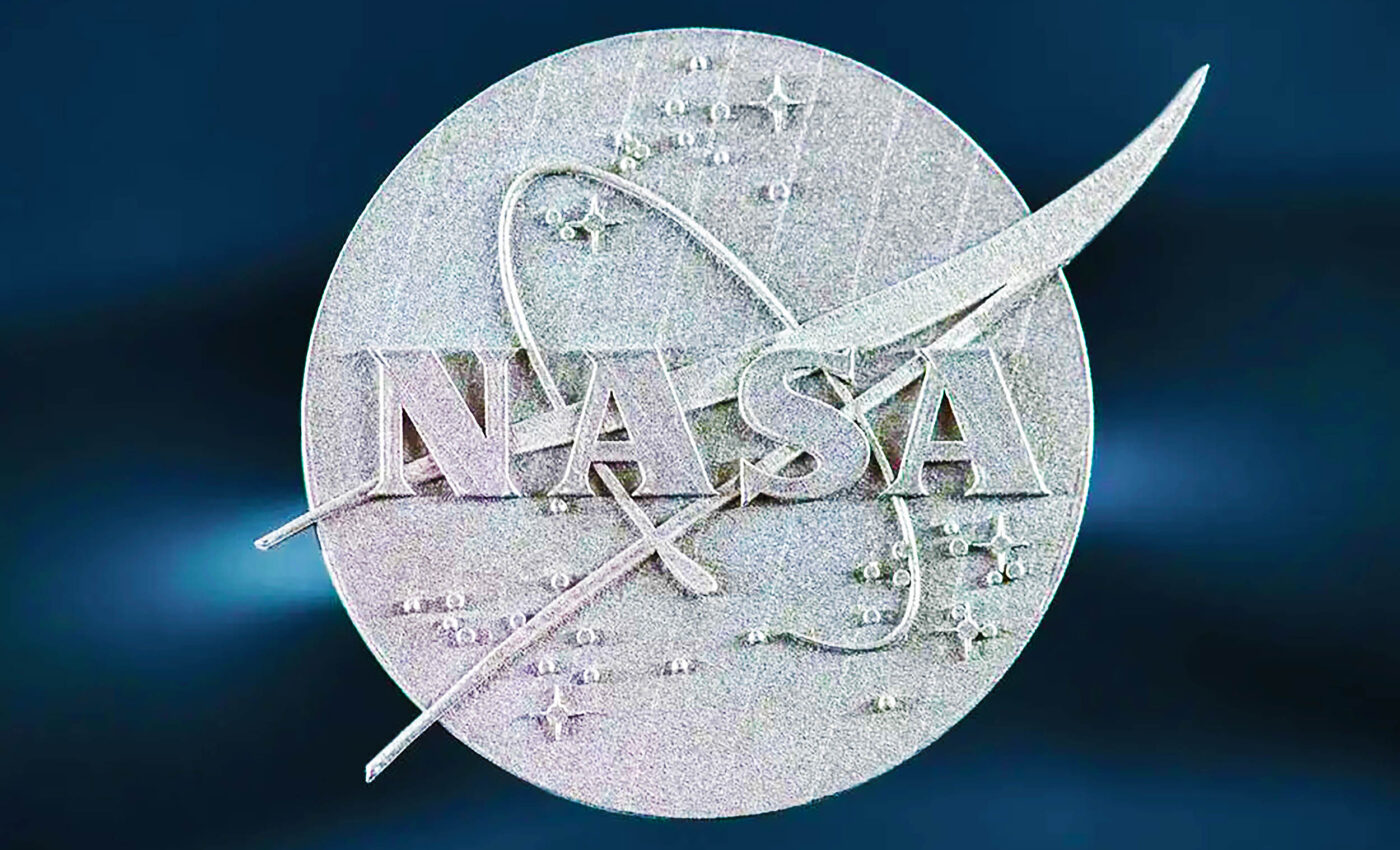
NASA's new super-metal 'GRX-810' set to transform the future
NASA has achieved a significant breakthrough in the development of 3D printable materials with the release of a new material with “unprecedented strength” that they are calling GRX-810.
This superalloy can withstand high temperatures, enabling the production of more robust and long-lasting components for aviation and space applications, marking a significant advancement in materials science.
GRX-810’s properties of exceptional strength and durability make it ideal for use in building aircraft and spacecraft, promising to revolutionize design and performance in the aerospace industry.
What are alloys?
Alloys and superalloys are materials created by combining two or more metals or a metal with another element.
This combination enhances the properties of the base metals, making alloys stronger, lighter, more durable, or more resistant to corrosion than pure metals.
The unique characteristics of alloys make them indispensable in various industries, especially aerospace.
Structural components
In aerospace, alloys are fundamental in constructing the frames and bodies of aircraft and spacecraft. Aluminum alloys are widely used due to their excellent strength-to-weight ratio.
These alloys provide the necessary structural integrity while keeping the overall weight low, which is crucial for improving fuel efficiency and performance.
For example, the fuselage and wings of modern aircraft often incorporate aluminum alloys to ensure both durability and lightness.
Engine parts
The engines of aircraft and spacecraft operate under extreme conditions, including high temperatures and intense stress.
High-performance alloys, such as titanium and nickel-based superalloys, are used in these components because they can withstand these harsh conditions without degrading.
These alloys are crucial for parts like turbine blades and combustion chambers, where maintaining structural integrity at high temperatures is essential for safety and efficiency.
Fuel systems
Alloys play a vital role in the construction of fuel tanks and fuel lines. Materials like stainless steel and certain aluminum alloys are used because of their durability and resistance to corrosion. This ensures the safe storage and transport of fuel, preventing leaks and minimizing maintenance needs.
Thermal protection
Spacecraft re-entering Earth’s atmosphere face extreme heat due to air friction. Alloys with high heat resistance, such as certain nickel and titanium alloys, are used in thermal protection systems.
These materials can withstand the intense temperatures and prevent the spacecraft from overheating, thus protecting the vehicle and its occupants.
Landing gear
The landing gear of aircraft must endure significant stress during takeoff and landing. Strong and tough alloys like titanium are ideal for this application.
Titanium alloys can absorb the shock of landing and support the aircraft’s weight, providing reliable performance and reducing the risk of failure.
NASA’s GRX-810 alloy’s structure
GRX-810’s exceptional properties stem from its unique microstructure. The alloy is infused with nanoscale oxide particles, which act as reinforcements, enhancing its mechanical properties.
This enables NASA’s GRX-810 alloy to withstand temperatures exceeding 2,000°F — hotter than most volcanic lava — making it ideal for high-temperature applications in jet engines and rocket components.
GRX-810 not only withstands extreme temperatures but also demonstrates exceptional durability. It outperforms existing state-of-the-art alloys by over 1,000 times in high-temperature stress tests.
Additionally, NASA‘s GRX-810 alloy offers enhanced malleability, allowing it to deform under stress before fracturing. This combination of thermal resilience and durability makes it a robust performer, ideal for demanding aerospace applications.
Modeling of NASA’s GRX-810 alloy
Developing ODS alloys like GRX-810 has traditionally been a complex and costly endeavor. However, NASA researchers have pioneered a novel approach that combines computational modeling with 3D printing.
This innovative methodology enables the precise distribution of oxide particles throughout the alloy, resulting in optimal high-temperature properties and unprecedented performance.
“Applying these two processes has drastically accelerated the rate of our materials development. We can now produce new materials faster and with better performance than before,” explains Tim Smith, a materials research scientist at NASA’s Glenn Research Center and co-inventor of GRX-810.
This accelerated development cycle not only reduces costs but also opens up new avenues for rapid innovation in materials science.
Transforming the future of flight
The implications of GRX-810 extend far beyond improved engine components. Its application could significantly reduce fuel consumption, lower operating costs, and contribute to more sustainable aviation practices.
“This breakthrough is revolutionary for materials development. New types of stronger and more lightweight materials play a key role as NASA aims to change the future of flight,” explains Dale Hopkins, deputy project manager of NASA’s Transformational Tools and Technologies project.
NASA’s GRX-810 alloy also empowers engine designers with new possibilities. The alloy’s exceptional strength-to-weight ratio allows for lighter designs without compromising performance, opening up previously unattainable trade-offs.
This newfound flexibility could lead to more efficient and innovative engine designs, pushing the boundaries of aerospace engineering.
Significance of NASA’s GRX-810 alloy
GRX-810 marks a paradigm shift in materials science by combining advanced computational modeling with additive manufacturing.
Evidently, this new alloy has immense potential to transform the aerospace industry. It promises lighter, more fuel-efficient aircraft and spacecraft that can endure the harshest environments.
As NASA continues to push the boundaries of innovation, GRX-810 stands as a testament to the agency’s commitment to advancing the future of flight. The alloy’s development reflects NASA’s dedication to creating groundbreaking technologies.
This ensures that the aerospace industry can meet the challenges of tomorrow with enhanced performance and sustainability.
—–
Like what you read? Subscribe to our newsletter for engaging articles, exclusive content, and the latest updates.
Check us out on EarthSnap, a free app brought to you by Eric Ralls and Earth.com.
—–













